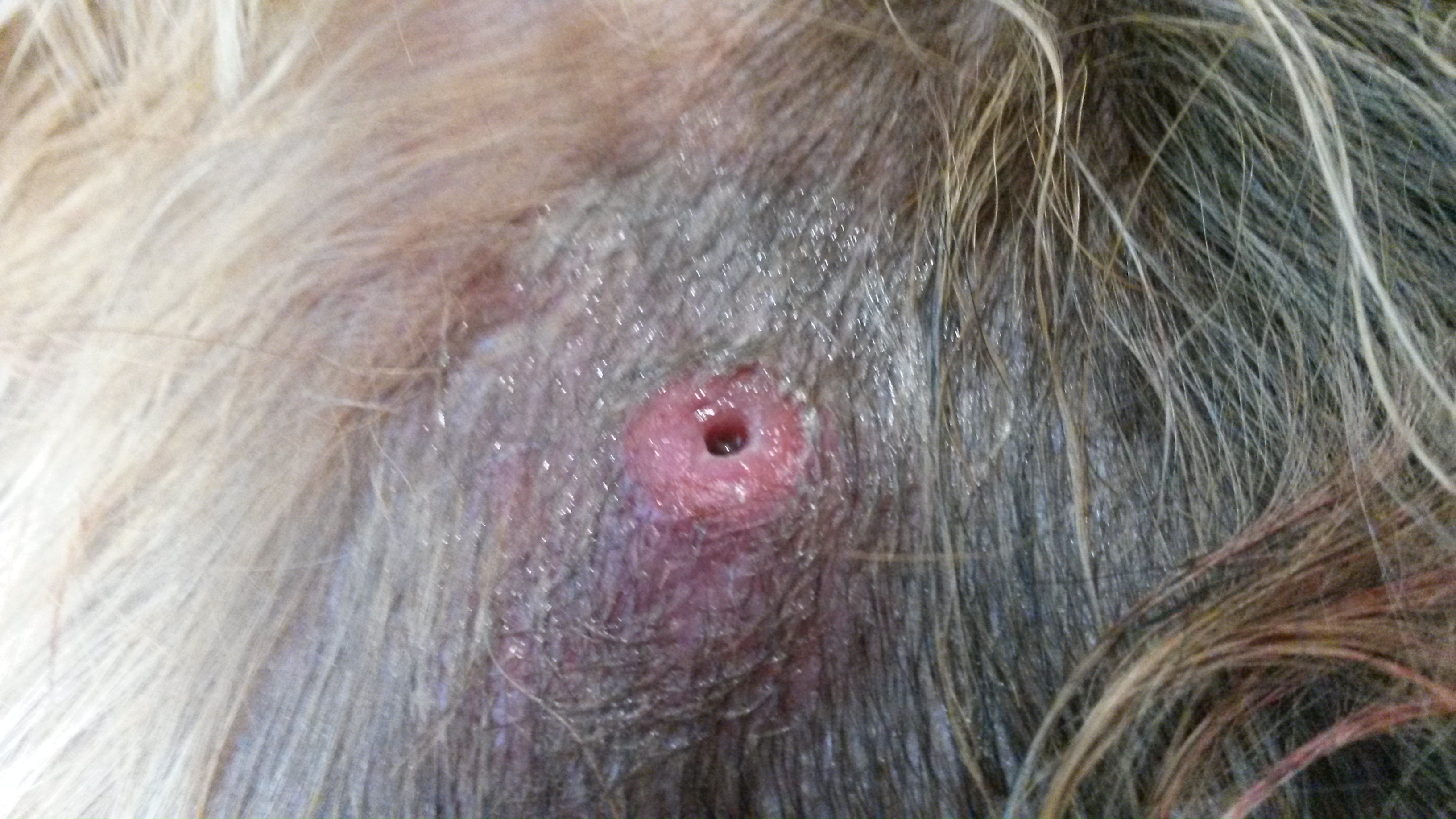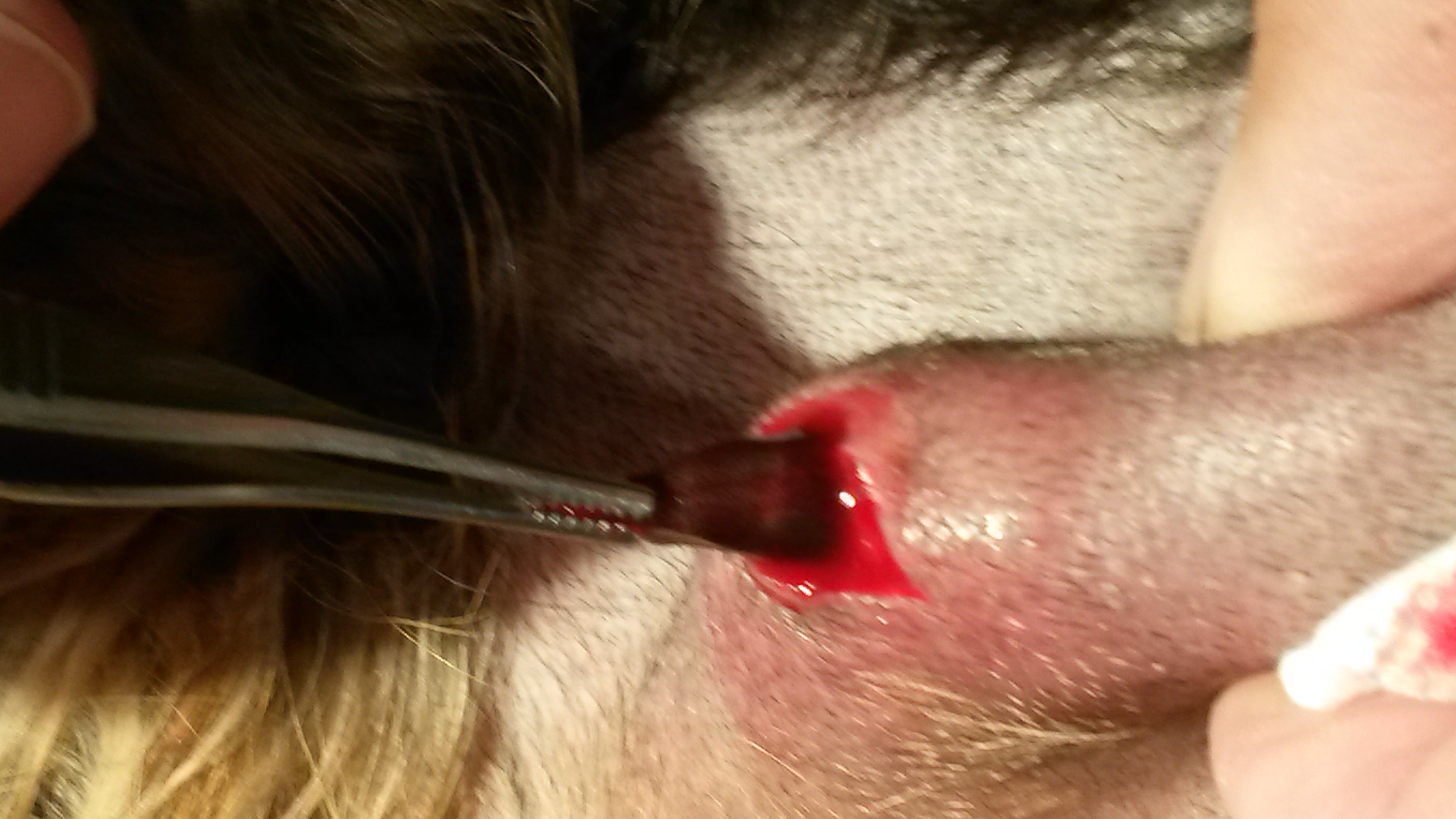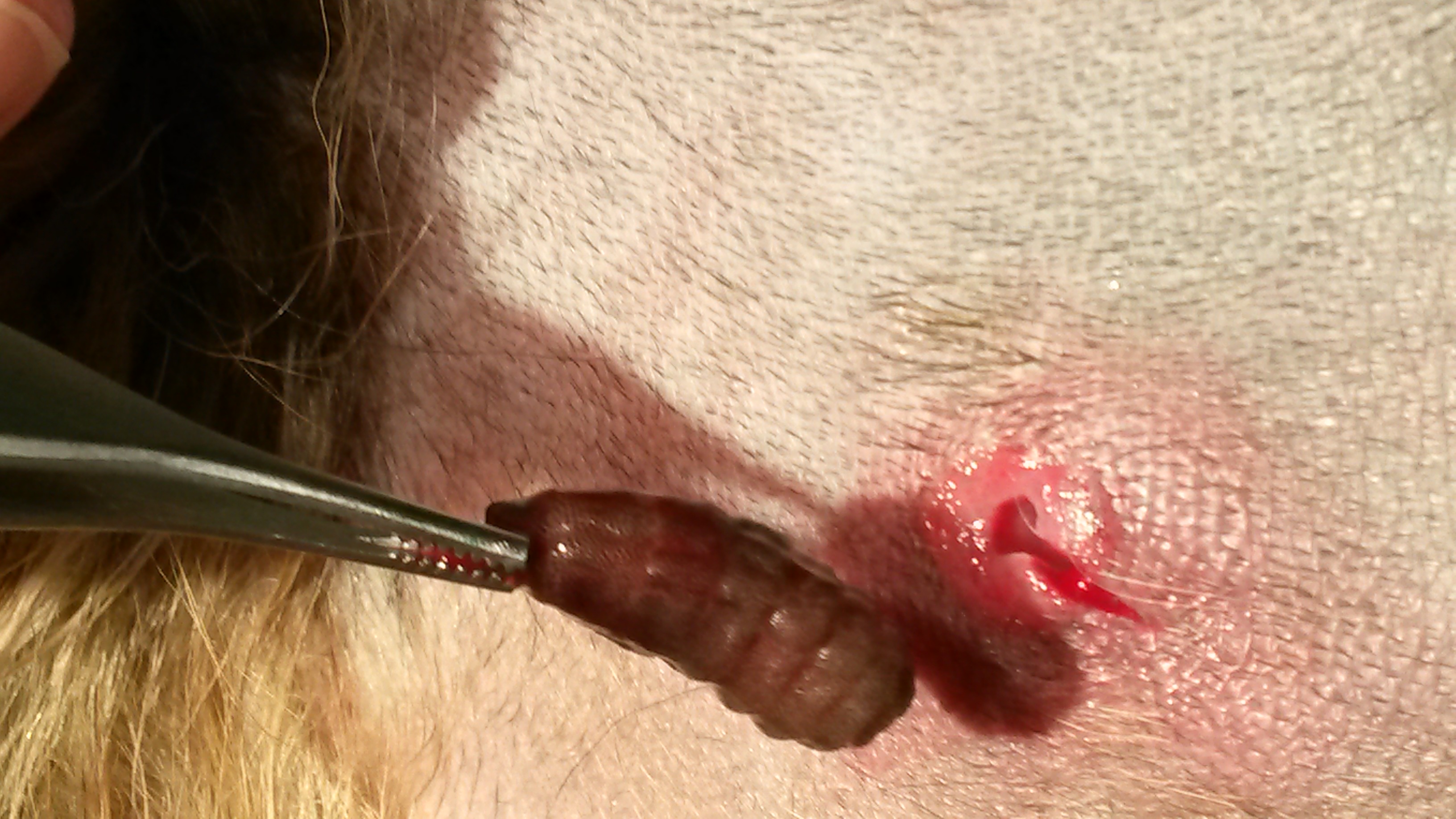Bot Fly Larvae in dog in Manasquan, NJ
This is an interesting, although somewhat gross, case of a fly larvae living inside a dogs skin and then popping out to hatch.
There are 34 species of bot fly larvae in North America, their scientific name is Cuterebra. They usually infect rabbits and rodents, although occasionally larvae mistakenly infect dogs and cats. The adult is a fly that looks like a bee, but doesn’t sting. The adult only lives a short time and it’s main goal in life is to lay eggs by rabbit and rodent burrows. The eggs hatch into larvae and are ready to attach to a passing animal to continue their life cycle.
While a dog or cat is rooting around a rabbit or mouse den a larvae can attach to the pet and enter the pet through the nose or mouth. Contrary to popular belief the bot larvae do not burrow through intact skin. The larvae will migrate inside the body and cause one of three syndromes:
- 1. Larvae can migrate to the brain, especially in felines, and cause neurological signs like circling, seizures, blindness or behavior changes. This is the typical cause of Feline Ischemic Encephalopathy.
2. Larvae can migrate in and around the lungs and trachea causing respiratory signs.
3. Most commonly, larvae eventually migrate to the skin and form a warble, or swelling where the larvae make a breathing hole. (See picture above) The larvae will grow and mature here, then pop out as a maggot 3-6 weeks later to burrow in the soil. In the soil they pupate into an adult fly to continue their life cycle.
Treatment of bots in the skin of pets is simply by extracting them surgically. (See picture above) Oftentimes the opening needs to be made bigger so the larvae can be pulled out intact. If the larvae breaks apart under the skin an allergic reaction can occur. Treatment of larvae in the brain of cats depends on a case by case basis, but usually requires an MRI for diagnosis and a variety of drugs for treatment. Treatment of respiratory cuterebra also involves a variety of drugs.
For more detailed information on Cuterebra in pets see http://www.capcvet.org/capc-
Squan Animal Hospital LLC 1427 Lakewood Rd Manasquan, NJ 08736 Phone: 732-528-9199 Fax: 732-528-0769 E-Mail: cs@squananimalhospital.com



